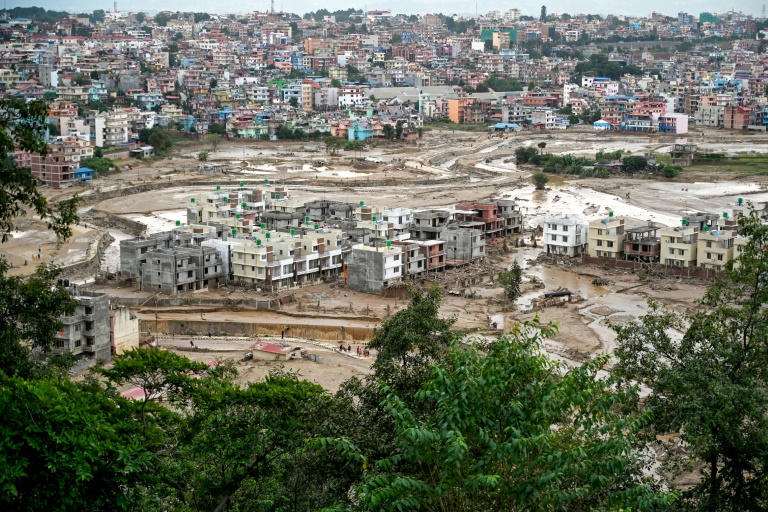Climate change, along with rapid urbanization and deforestation, caused floods in Nepal that killed more than 240 people last month, scientists said Thursday.
Nepal suffered its worst flooding in decades in late September after heavy monsoon rains swelled rivers, inundating entire neighborhoods in the capital Kathmandu and other districts.
World Weather Attribution (WWA), a network of scientists assessing the role of human-induced climate change on extreme weather events, said the link between the intense rainfall and a warming planet was clear.
“If the atmosphere had not been overloaded with fossil fuel emissions, these floods would have been less intense, less destructive and less deadly,” said researcher Mariam Zachariah of Imperial College London.
Their analysis found that the relentless rain, which fell on saturated ground during the late monsoon, was made at least 10 percent heavier and 70 percent more likely by climate change.
They warned that such “explosive” rainstorms “will become even more intense, potentially causing even more devastating floods” if the world does not stop burning fossil fuels.
The heavy rains on September 26 led to floods and landslides that killed 246 people and left 18 missing, according to the Nepalese government.
WWA, which uses models to compare weather patterns in our world with a world without human-induced climate change, said there was a high degree of uncertainty in the results due to the complex rainfall dynamics in the small, mountainous area affected.
However, the results were consistent with growing scientific evidence about large-scale extreme rainfall events in a warming climate, where the atmosphere holds more water.
The role of climate change, they said, was also exacerbated by other man-made problems, including rapid urbanization, with a nearly fourfold increase in built-up areas in Kathmandu since 1990.
This was accompanied by extensive deforestation that disrupted the natural flow of water, causing the number of trees to decline by more than a quarter since 1989.
The floods destroyed hydroelectric power stations, washed away houses and tore away bridges. It was the latest disastrous flood to hit the Himalayan country this year.
“Climate change is no longer a distant threat,” said Roshan Jha, a researcher at the Indian Institute of Technology in Mumbai.
“With every fraction of a degree of warming, the atmosphere could potentially retain more moisture, leading to much heavier rainfall and catastrophic flooding like this.”
Nepal has begun building massive hydropower dams, which generate 99 percent of its energy and have quadrupled production in the past eight years.
It has signed deals to export surplus energy to neighboring coal-dependent India.
Earlier this month, the UN’s World Meteorological Organization said increasingly intense floods and droughts are a “distress signal” of things to come as climate change makes the planet’s water cycle increasingly unpredictable.
WMO chief Celeste Saulo called water the “canary in the coal mine of climate change.”
bur-pjm/sah/pbt/dw

